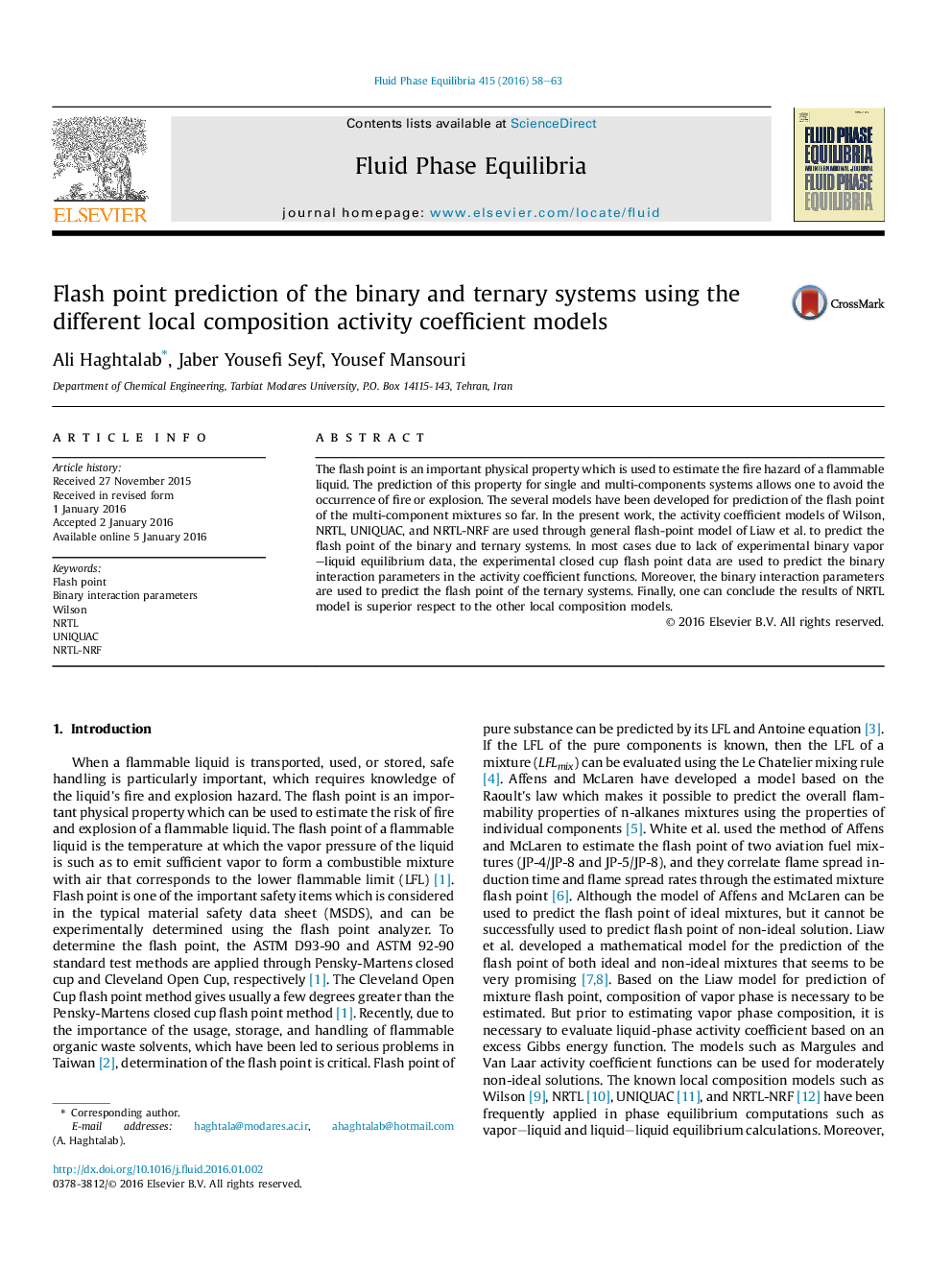| Article ID | Journal | Published Year | Pages | File Type |
|---|---|---|---|---|
| 200603 | Fluid Phase Equilibria | 2016 | 6 Pages |
•Flash points are calculated for organic systems using Liaw and local composition models.•The local composition models are Wilson, NRTL, UNIQUAC and NRTL-NRF•The parameters of these models were obtained using closed cup flash point data.•The flash points data are predicted for two ternary systems using the binary parameters.•The results of NRTL model are superior for prediction of the flash point of the systems.
The flash point is an important physical property which is used to estimate the fire hazard of a flammable liquid. The prediction of this property for single and multi-components systems allows one to avoid the occurrence of fire or explosion. The several models have been developed for prediction of the flash point of the multi-component mixtures so far. In the present work, the activity coefficient models of Wilson, NRTL, UNIQUAC, and NRTL-NRF are used through general flash-point model of Liaw et al. to predict the flash point of the binary and ternary systems. In most cases due to lack of experimental binary vapor–liquid equilibrium data, the experimental closed cup flash point data are used to predict the binary interaction parameters in the activity coefficient functions. Moreover, the binary interaction parameters are used to predict the flash point of the ternary systems. Finally, one can conclude the results of NRTL model is superior respect to the other local composition models.
